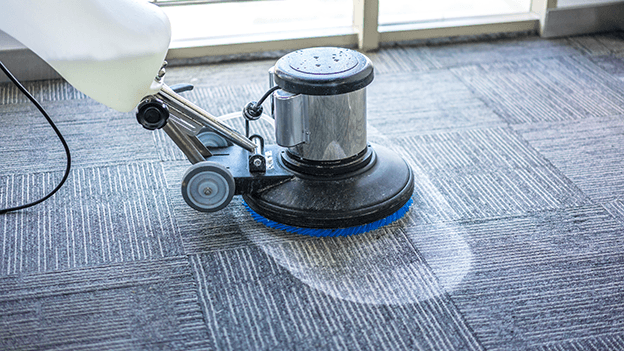he Best Carpet Cleaning Techniques for Different Carpet Types
Carpets come in a variety of materials and styles, each requiring specific care to maintain their appearance and longevity. Whether you have plush carpets, berber, wool, or synthetic, using the right cleaning method is essential for preserving their texture, color, and durability. Deep carpet cleaning is a highly effective method for removing dirt, stains, and allergens, but how it’s applied can vary depending on the type of carpet.
In this blog, we will explore the best carpet cleaning techniques for different types of carpets, including the benefits of professional deep carpet cleaning to ensure your carpets remain fresh and vibrant for years to come.
1. Plush Carpets: Maintaining Softness and Comfort
Plush carpets are popular for their luxurious feel, but their thick pile can trap dirt, dust, and allergens more easily than low-pile carpets. The dense fibers of plush carpets require a more thorough cleaning method to ensure dirt is removed from deep within the fibers.
Recommended Cleaning Technique: Steam Cleaning
Steam cleaning, also known as hot water extraction, is one of the best methods for deep carpet cleaning when it comes to plush carpets. This method uses high-temperature water and powerful suction to penetrate deep into the carpet fibers, loosening dirt and debris trapped in the pile. Steam cleaning is effective in removing tough stains and killing bacteria and dust mites, which are common in thick carpets.
Tip: While steam cleaning is highly effective, it’s important to let the carpet dry completely after cleaning to prevent mold growth, which can occur in the thick pile of plush carpets if moisture is left behind.
2. Berber Carpets: Protecting Looped Fibers
Berber carpets are known for their durability and resistance to wear, making them ideal for high-traffic areas. However, their looped construction can pose a challenge when cleaning, as dirt and debris can become trapped in the loops, and improper cleaning techniques can damage the fibers.
Recommended Cleaning Technique: Dry Carpet Cleaning
Dry carpet cleaning is an excellent choice for Berber carpets. This method uses minimal moisture, reducing the risk of damaging the loops or causing them to unravel. A cleaning powder is applied to the carpet and then worked into the fibers with a machine. The powder absorbs dirt and debris, which is then vacuumed away.
Because Berber carpets are prone to pulling, it’s important to avoid heavy-duty scrubbing or excessive moisture. Dry cleaning is a gentle method that effectively cleans the surface without risking damage to the loops.
Tip: Avoid using high-heat methods like steam cleaning for Berber carpets, as they can cause the fibers to shrink or pull.
3. Wool Carpets: Preserving Natural Fibers
Wool carpets are known for their softness and natural durability, but they also require special care. Wool is a natural fiber, making it more sensitive to harsh chemicals and excessive moisture. It’s important to use the right cleaning method to maintain the beauty and integrity of wool carpets.
Recommended Cleaning Technique: Low-Moisture Carpet Cleaning
Low-moisture cleaning methods, such as encapsulation, are ideal for wool carpets. Encapsulation cleaning involves applying a specialized cleaning solution that crystallizes dirt and debris, allowing it to be easily vacuumed away once dry. This method is gentle and uses less water than traditional methods, making it safe for delicate wool fibers.
Another effective deep carpet cleaning technique for wool carpets is professional dry cleaning, which avoids water altogether and reduces the risk of shrinkage or fiber damage.
Tip: Wool carpets are naturally stain-resistant, but it’s still important to clean up spills quickly to prevent permanent stains. Regular vacuuming is also crucial to prevent dirt from embedding in the fibers.
4. Synthetic Carpets: Stain Resistance and Easy Maintenance
Synthetic carpets, such as nylon, polyester, and olefin, are widely used due to their affordability, stain resistance, and durability. These carpets are generally easier to maintain than natural fibers, but they still require regular deep carpet cleaning to remove embedded dirt and extend their lifespan.
Recommended Cleaning Technique: Hot Water Extraction (Steam Cleaning)
Steam cleaning is highly effective for synthetic carpets, as it deep cleans and removes stains, dirt, and allergens. Since synthetic fibers are less sensitive to moisture, steam cleaning can be safely used to penetrate deep into the carpet and remove grime. The high temperature of the steam helps to sanitize the carpet, making it a great choice for homes with pets or young children.
Tip: Synthetic carpets are prone to static buildup, which can attract more dust. Consider using anti-static treatments to keep your carpet looking fresh between deep cleanings.
5. Shag Carpets: Managing the Long Pile
Shag carpets, known for their long and thick fibers, are a bold style statement, but they can also be challenging to clean. Dirt, pet hair, and other debris can easily get caught in the long fibers, making it difficult for standard vacuums to reach. Shag carpets require a deep carpet cleaning technique that penetrates the length of the fibers without damaging them.
Recommended Cleaning Technique: Professional Cleaning with a Carpet Rake
For shag carpets, it’s recommended to use professional cleaning methods that include the use of a carpet rake to lift the fibers and allow cleaning agents to reach deep down. This helps loosen debris trapped in the long pile. Steam cleaning or hot water extraction can also be used for shag carpets, but the fibers should be raked afterward to restore their fluffy appearance.
Tip: Regular maintenance, such as vacuuming with a suction-only attachment (no beater bar), can help prevent dirt buildup and extend the time between professional cleanings.
6. Commercial Carpets: Durability Meets Efficiency
Commercial carpets, often made from durable materials like olefin or nylon, are designed to withstand heavy foot traffic. However, they still require routine deep carpet cleaning to maintain their appearance and prolong their lifespan. Commercial carpets are typically found in offices, hotels, and other high-traffic areas where cleanliness is essential for both hygiene and aesthetic purposes.
Recommended Cleaning Technique: Bonnet Cleaning
Bonnet cleaning is a quick and efficient method often used for commercial carpets. This method involves using a rotating bonnet or pad soaked in cleaning solution to scrub the surface of the carpet. While it doesn’t clean as deeply as steam cleaning, it’s ideal for maintaining the appearance of commercial carpets in between deeper cleanings.
For a more thorough clean, hot water extraction is also an effective option for commercial settings, especially for carpets that endure heavy usage.
Tip: In high-traffic areas, schedule deep carpet cleaning at least twice a year to maintain hygiene and appearance.
Conclusion
Choosing the right carpet cleaning technique is crucial for maintaining the beauty and longevity of your carpet, regardless of the material. From plush to Berber, wool to synthetic, each type of carpet has its own unique needs, and understanding the best cleaning methods will help you achieve the best results.
Regular deep carpet cleaning not only enhances the appearance of your carpets but also helps maintain a healthier living environment by removing allergens, bacteria, and dirt. Whether you choose steam cleaning, dry cleaning, or bonnet cleaning, investing in professional services tailored to your carpet type is essential for ensuring your carpets remain fresh and clean for years to come.
Contact a professional carpet cleaner today to schedule your next deep clean and enjoy the benefits of a cleaner, healthier home. Read More














Post Comment